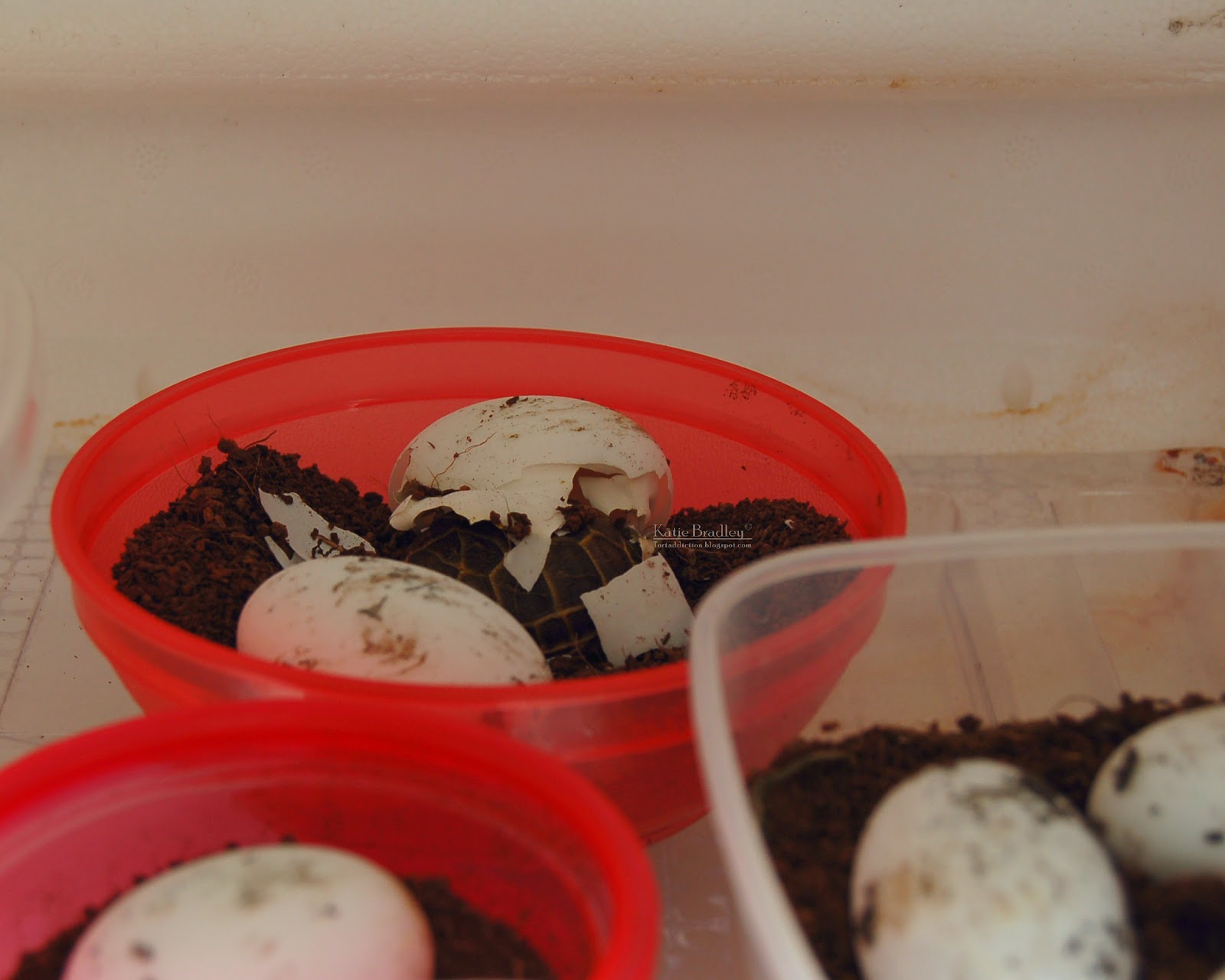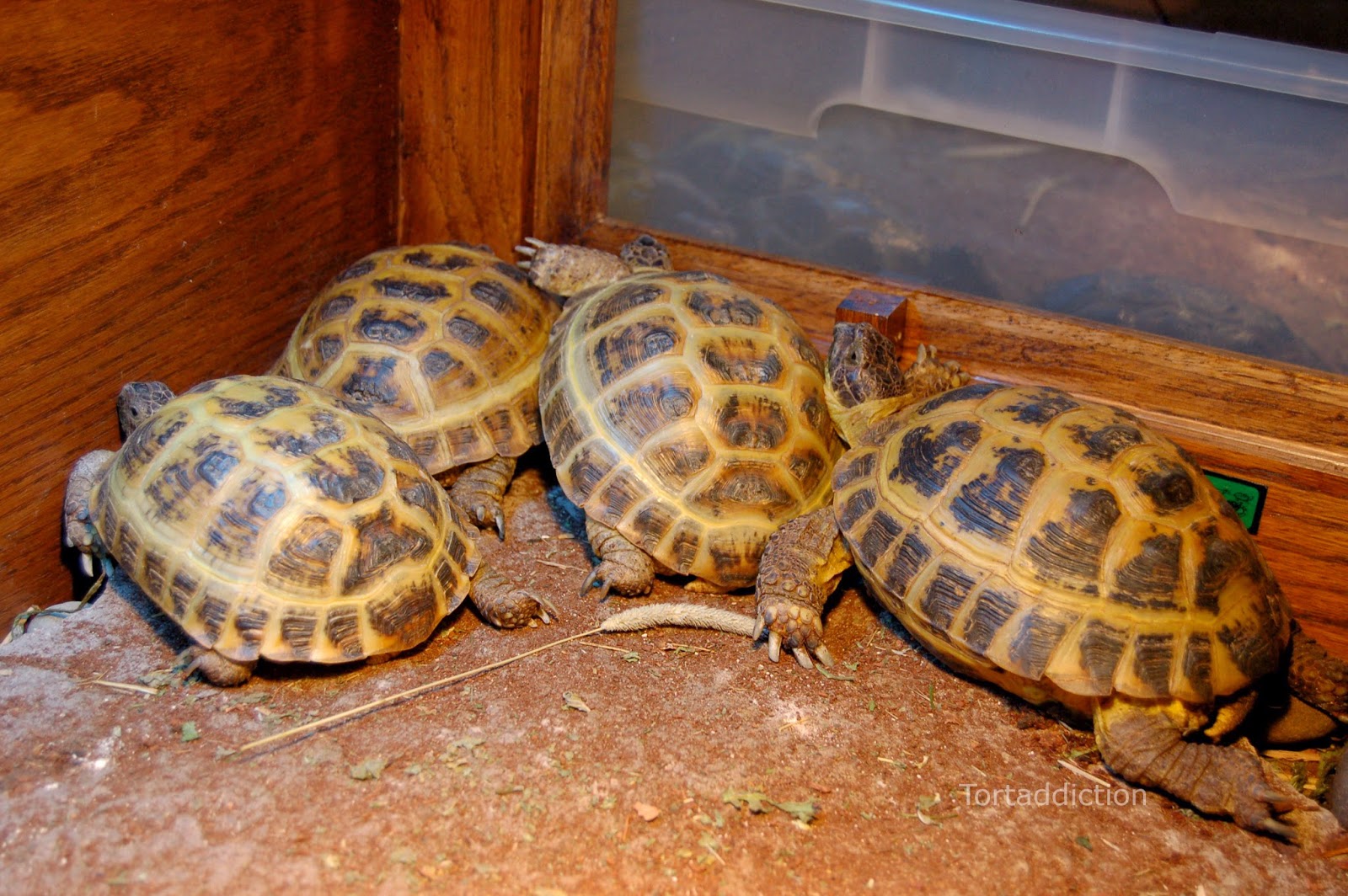After 64 days of incubation, the first of my Russian tortoise eggs hatched this evening! I had already checked on the eggies in the incubator this morning, and there was nothing to see. When I briefly shone the flashlight in there this evening, I was surprised and delighted to see this:
 |
| Baby#1 made its appearance out of egg#2! |
I carefully opened the incubator and took baby and egg out of the incubation substrate. She had a bit of egg shell stuck on her face, so I dripped some water on her head very carefully, and it came right off.
 |
| 14g of cuteness! |
This little one has all the parts it should have (2 eyes, 4 legs, 1 tail), and a few extra scutes (scutes are the little square-ish partitions in the shell). Extra scutes won't hurt her in the least, they just make her unique.
 |
| Bright eyed and wriggly! |
After weighing the wee one and showing her to the hubby and the kids, I carefully placed her in a little container with a moist paper towel, and put her and her egg back into the incubator. She will spend a bit of time in there, and will then move into a nice enclosure where she will grow and explore!
 |
| My first Russian tortoise hatchling |
I am so proud that my favorite female tortoise Timmy is now officially a Momma... and hopefully there will be many, many more baby tortoises to follow over the next 100 years of Timmy's life! :)
UPDATE: Baby#1 is now out of the incubator, and in the closed-chamber enclosure I've set up for the babies.
 |
| Spunky little baby#1 basking |
 |
| I think she knows she is cute! |















